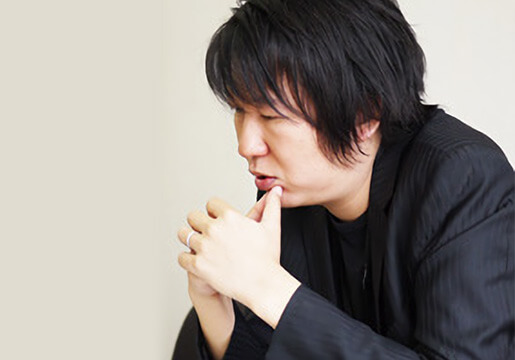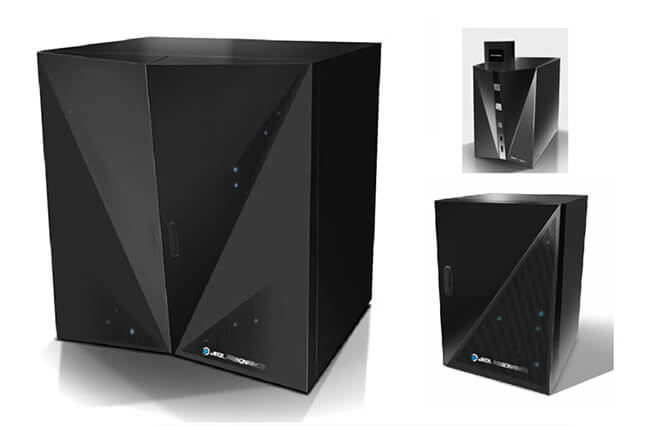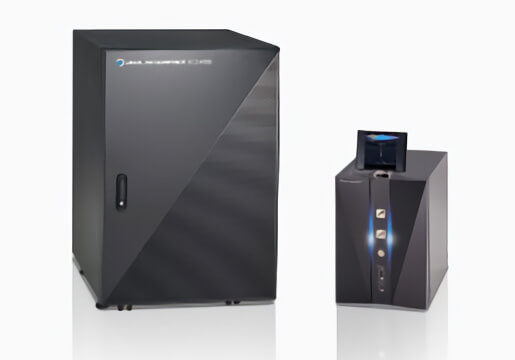Definitely, we can : The story behind the birth of the world’s smallest high performance spectrometer
ECZS NMR spectrometer Z that JEOL RESONANCE released, which will determine the future of the company. The development work of the spectrometer which is the world’s smallest as the one for 400 MHz, was about to reach the most interesting part in Spring 2013.
Title of World’s No. 1

In the development planning office, Hachitani, project leader, raised his voice looking to the team leaders responsible for each unit. Hachitani’s belief was unshaken; they have to make the world’s smallest NMR spectrometer.
The size of the spectrometer greatly influences the ease of use. The smaller the spectrometer is, the greater is the installation flexibility. But does it have to be the world’s smallest?
“We managed to make it half of the previous model. It’s enough, isn’t it?”
Opinions came from the exhausted staff one after another, but Hachitani kept shaking his head.
The world’s smallest! This title was the best way to reward the young team who had devoted themselves to development day and night.
“If I were a spectrometer specialist, I wouldn’t have said that. Luckily or unluckily, I was virtually a layman, that’s why I was able to set an objective that does not follow common-sense”.
The further size reduction was small, but so too was the time allowed to achieve it.
As a result of their continued considerations, suppliers of various components were consulted and a second trial model was completed. The depth was shorter by 10 cm than the first model; the revised calculation worked. Hachitani’s challenge to staff encouraged them to produce ideas above and beyond their individual abilities.
“It’s cool” Every person who looked at the trial model exclaimed with delight. Every time a voice was heard, a bright lustre shone on the faces of Hachitani and the team.
“I can’t sacrifice the heart and soul of staff”
Hachitani’s enthusiasm even influenced people outside JEOL Resonance.
Thinking about a design suitable for the spectrometer for tomorrow’s world, Hachitani asked for the cabinet to be designed by KEN OKUYAMA Design Company, well known for their design of Ferrari sports cars.
However, the spectrometer cabinet is not just an outer case. It must provide excellent protection against high frequency radiation, etc. In addition, the design has to be unique, advanced, and sophisticated, attractive. It was a demanding order.
A few days later, looking at the first design sketches that KEN OKUYAMA Design brought, Hachitani hesitated. Beautiful curves and impressive decoration, every sketch seemed to meet the requirement. However, if they make a cabinet according to these sketches, they would have to ease the limitation on size.
But wouldn’t small changes be ok? Only a little bigger is what they wanted. Surprise everyone and make them happy. Hachitani was tempted by these ideas more than once. However, he rejected them, “I can’t sacrifice the heart and soul of the staff who reduced it to the limit” and said to the designer,
“We can’t make the size bigger, but we still need originality”.
Fixing the size can impose restrictions on the design so those with curves were rejected. Additionally, a year is normally given in considering a design, but there was only about a month left at this time. The designer sat back for a while and eventually said: “We are professionals. We will arrange for a redesign, for the smaller dimensions, but still something dramatic”

Start again from zero
A couple of months earlier, whilst the hardware team continued in its struggle to down-size the instrument, the software team also faced a fierce fight. They had already stopped the development which was in the final stage as they ran into fundamental questions of construction that had to be addressed. Questions were raised from the team, “If the current architecture is sufficient for the data measurement throughput requirement now, and if it must be capable of fulfilling data measurement requirements for the next 10 years, then that is more advanced than had been assumed”. Opinion supporting the development with the current specification on the basis that it can provide more than enough performance, collided with the other opinion that we should aim at an upgraded response in subsequent generations of software.
Then the team considered the future. The fundamental software design division returned to the beginning and thought about a new architecture. They assumed patterns of complex pulse sequences which, it can be said, are almost infinite, and what kind of software operation will be needed. The whole team thought through the issues and simulated how many times such an operation was needed, and if the new architecture can achieve it.
The software team was in a battle. They calculated the complex patterns of such requirements as much as possible and made repeated refinements. They were engaged in a combat whose end was unknown.
Inspire a soul

At the end of summer, the software team arrived at the answer. At that time it was not a complete solution, but a firm foundation to build on, a ray of light was seen.
One day, the software design leader, “I”, came over to the hardware team room. He was wearing a shirt with a dirty collar and creased, rolled-up sleeves, the software team followed him. In the room, the completed trial model of KEN OKUYAMA DESIGN stood in the centre. Hachitani had asked for a model to be made and realized that the shape was based on a sketch that Okuyama had drawn in a hurry.
The cabinet was all in black, which was not at all influenced by Hachitani’s attire. The sharp edges were striking; it was full of a sense of sophistication; it was first-class, and all in a simple square shape.
I’s eyes popped out with amazement. “Ha-ha”. A little laughter came out, “Too cool, Hachitani-san. The body is ready but the soul has to be ready, too. ” Determination was seen etched on I’s face. It was hot, but it was not only because of the warmth of late summer.
